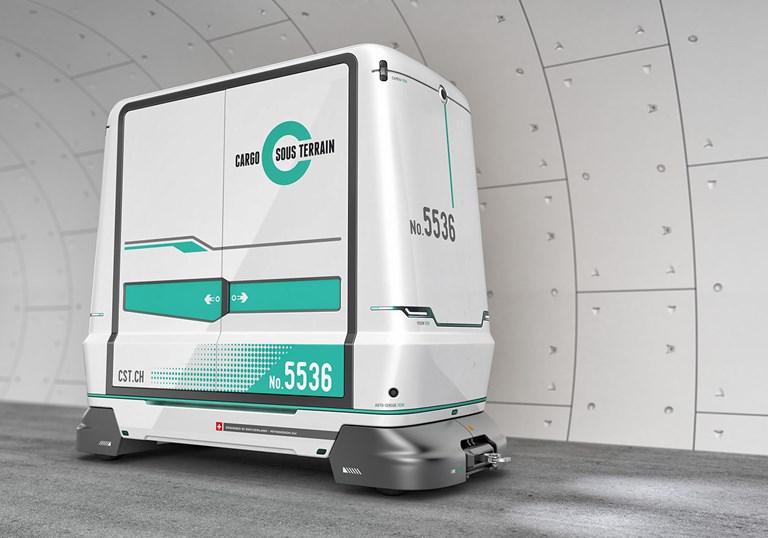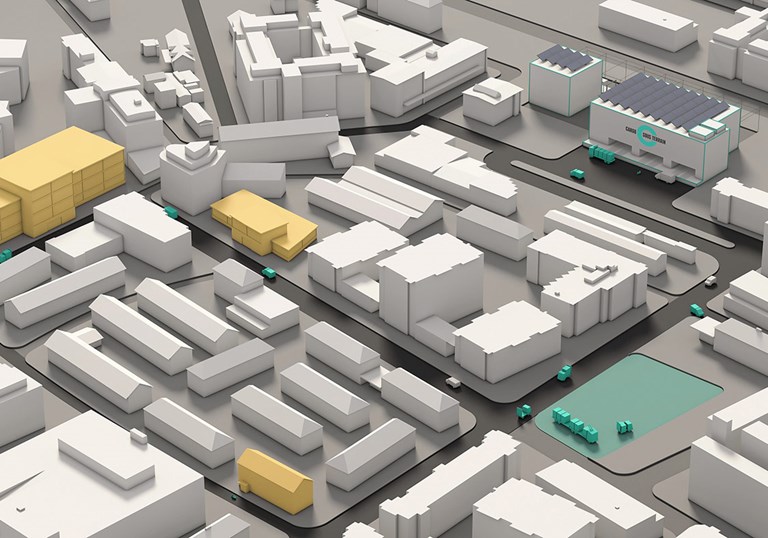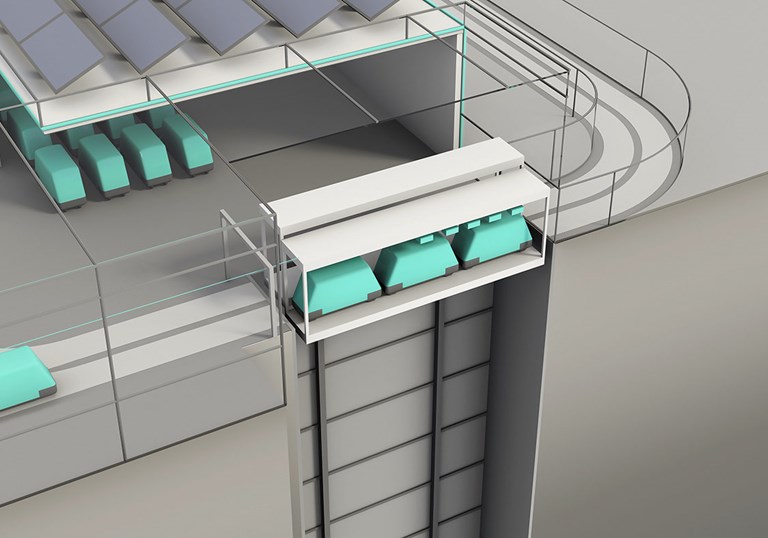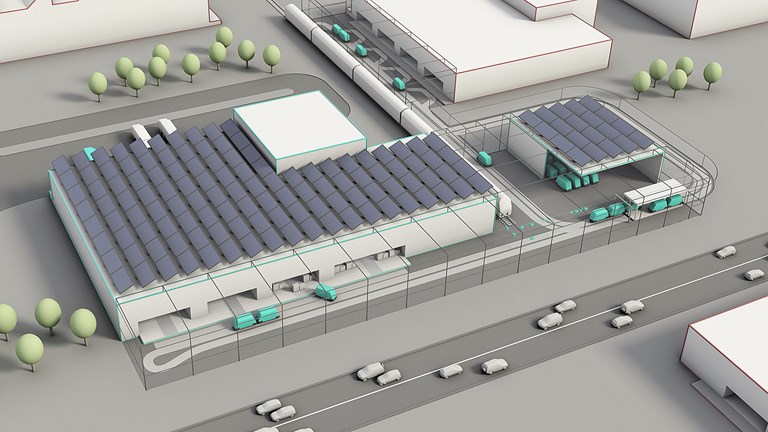
Freight transport, the future is underground
In Switzerland in 20 years’ time, goods will travel along an automated underground metro system from Lake Constance to Lake Geneva. This is what the ‘Cargo sous terrain’ (CST) project envisions and would like to realise. The tunnels will connect production and logistics sites with city centres. Above ground, CST will distribute goods with environmentally friendly vehicles, helping to reduce traffic and noise emissions. 100% of the power to run the system is expected to come from renewable energy sources.
Whether the project becomes a reality will depend on the investment capacity that the shareholders, including many giants from the retail, logistics, transport and communications industries, will be able to put in place. The first test will be the construction of the section between the Härkingen-Niederbipp hub and Zurich from 2031.
To innovate also means to see what the world will be like in 20 or 30 years, what the needs will be. To find out how the world of Swiss logistics might change thanks to the CST project (cst.ch), we interviewed Daniel Wiener, member of the board of directors and executive committee of Cargo sous terrain.
What is the objective of Cargo sous terrain?
“The goal is to improve the quality of life throughout Switzerland by significantly relieving motorways, towns and cities of heavy traffic. About one third of the traffic is moved below ground level. The increasing number of parcels and pallets will be transported fully automatically from the sender to the destination.”
What are the most innovative technological aspects?
“In the hubs, where the goods leave the tunnel to reach the surface, they are already sorted, so that they can be picked up directly and reach their destination by electric vehicles or city-sized transport bicycles. This is thanks to the pre-sorting in the three or four lane tunnel, which serves not only as a transport route but also as a ‘horizontal high-bay warehouse’ located under Switzerland. Predictability of arrival times is crucial because these processes are fully digitised and the prices are attractive for shippers because of the efficiency gains.”
What are the major difficulties to be overcome to achieve this?
“The transformation of the logistics market through Cargo sous terrain is comparable to the transition that has taken place over the past two decades in the telecommunications sector. In the past, when you used to call, we paid per minute or per SMS; today, however, we pay for the capacity we subscribe to with the telecommunications provider. The distance of the calls or the amount of data transported no longer matters, only the ‘thicknesses’ of the line we use. Thanks to Cargo sous terrain, logistics customers will also benefit in the future from guaranteed fixed prices that exactly match their needs. Cargo sous terrain therefore requires a fundamental rethinking of the market. The example of the telecommunications sector encourages us to believe that this will be possible.”
What are the economic benefits and what are the sustainability benefits?
“As mentioned, all processes, e.g. also transhipment, are automated and digitally controlled. The efficiency gains will lead to savings for customers and better services. In addition, less storage space, less personnel and fewer trucks are required, resulting in cost savings. This makes Cargo sous terrain economical for everyone involved and still sustainable: the system takes up less land. The pressure to expand highways decreases, thus saving cultivated land. There are fewer road repairs, less fine dust, less noise and less CO2 emissions.”
How can Cargo sous terrain integrate with AlpTransit and the cantons not involved in the project?
“This is a central point. Cargo sous terrain serves the whole of Switzerland. Where we don’t have our own hubs, we work together with the railways so that everything can be handled from a single source, even if different partners provide the actual services in the background. Cargo sous terrain is a collaborative innovation supported by 82 partner companies in the Swiss economy.”
Daniel Wiener
Year of birth: 1953
Profession: economist, cultural manager and journalist
He has been a member of the board of directors and executive committee of Cargo sous terrain (www.cst.ch) for more than ten years, where he is also responsible for project financing as investor relations manager. After decades of entrepreneurial activity at ecos (www.ecos.ch), he now works as a consultant for sustainable development in Basel. An economist, cultural manager and journalist, he is founder and president of the Global Infrastructure Basel Foundation (www.gib-foundation.org). He is co-founder and board member of the UNEP BASE Collaboration Centre. Since 2002, he has supported the financing of sustainable energy solutions in developing and emerging countries (www.energy-base.org). Daniel Wiener is also President of the Swiss Foundation for Architecture (SAS).
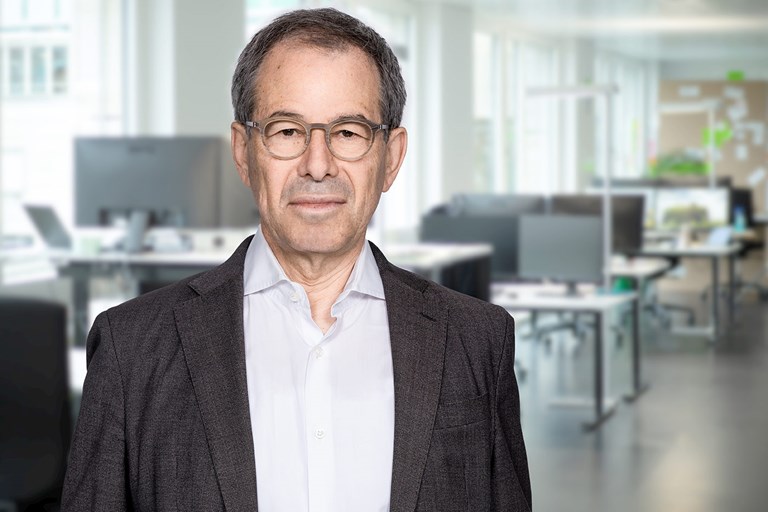
From St. Gallen to Geneva
The project involves 24-hour automatic wagons moving at a speed of 30 km/h along underground tunnels between Lake Constance and Lake Geneva.
What is it for
A creare un sistema logistico cittadino con veicoli ecologici per un’efficiente microdistribuzione delle merci. L’obiettivo è alleviare il carico sulle città fino al 30% del traffico di consegna e per il 50% delle emissioni acustiche.
How it works
Cargo sous terrain (CST) involves the construction of a three-lane tunnel that will operate 24 hours a day and is intended to connect important logistics centres in the Highlands. The goods, transported at a speed of 30 kilometres per hour, will be entered and withdrawn in a fully automated manner via shafts equipped with hoists.”
The first section
The first section of the Cargo sous land network will run from Härkingen-Niederbipp to Zurich and will be approximately 70 kilometres long. Expansion to other key logistics and distribution centres in Switzerland will continue until 2045, creating a total network of 500 kilometres between Lake Constance and Lake Geneva, with branches to Basel, Lucerne and Thun. The total cost of building the first section, including software, hubs and underground and ground vehicles (for distribution in the cities) is estimated at CHF 3 billion.
Financing
The total project costs are in the order of CHF 30-35 billion. The Federal Chambers of Parliament last year passed the law that defines the legal framework for the construction and operation of CST. The project is expected to cost 30-35 billion, but will be financed entirely by private investors. CST’s shareholders include SBB Cargo, Swisscom, Swiss Post, Migros, Coop and Zurich-Kloten Airport.
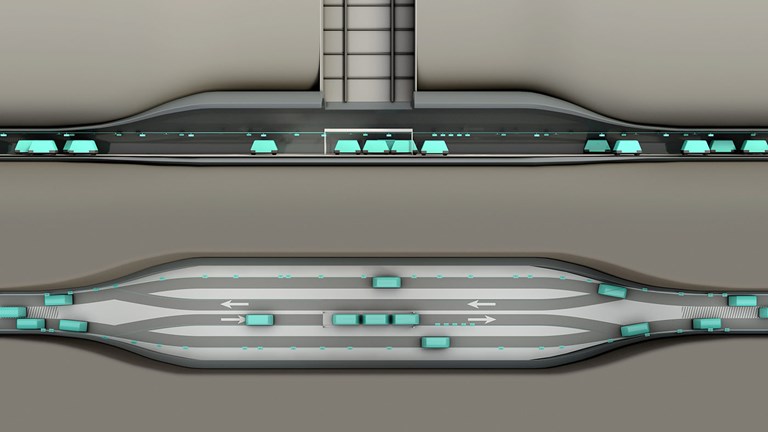
Playlist


